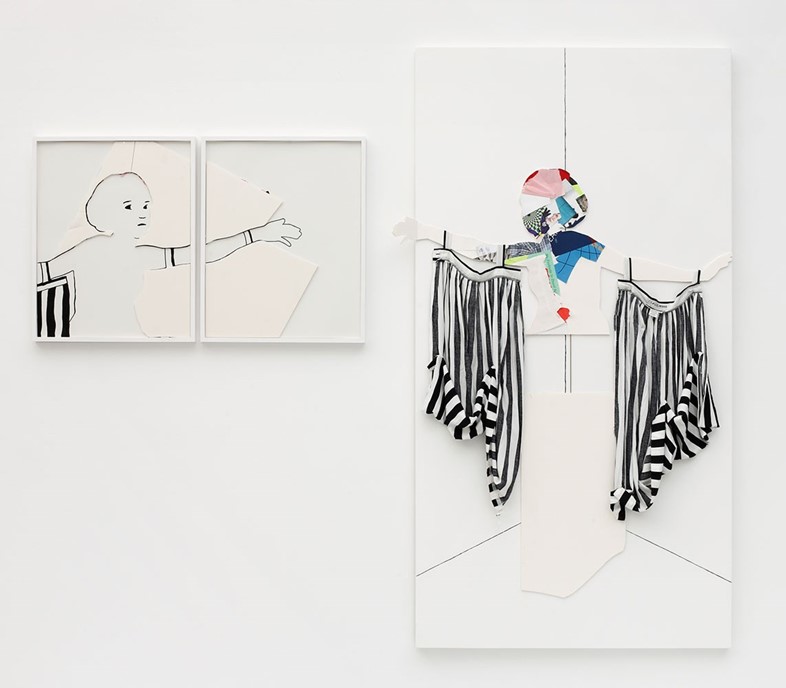The indisiplinary artist reveals how her writing becomes sculpture, and why making art is like putting out
When Mark Godfrey, senior curator of international art at the Tate, and LA-based artist Frances Stark collected their respective prizes at the Absolut Art Awards in Stockholm last week, a small clerical error meant that the two had accidentally been switched; Godfrey collected a certificate marked with ‘Artwork’, and Stark that of ‘Art Writing’ rather than the other way around. As it happens, in the latter circumstance this mix-up couldn’t have been more appropriate; for years Stark has insisted that her practice is writing, rather than making work in the traditional sense. She has written poems, essays and poetry, and published or been featured in nine books to date, while past work has seen her hand-trace words and letters from classic literature to reproduce as visual motifs in her imagery.
This emphasis on written communication lends a confessional element to Stark’s work, which is only reinforced by her unabashed presence within it. She is best known for a project she created, for example, which took the form of a feature-length animation composed of both conversations and the odd sexual encounter she had had in online chatroom ChatRoulette. To this end, the title of the piece, My Best Thing, refers to one of her subjects’ pet name for his penis. Where other artists balk at the idea of featuring themselves directly in their work, Stark shows no fear.

Likewise, she considers the proposal for which she was given the award – a tragicomic interpretation of Mozart’s The Magic Flute, made in collaboration with an LA youth orchestra – a kind of ‘pedagogical opera’, an extension of her experience teaching and being taught, both as a professor at the University of Southern California and elsewhere. In true Stark tradition, however, it’s also about sex. “It’s important to remember that at the time of its first staging, the ‘magic flute’ was an unapologetic sexual innuendo,” she explains in her proposal, “and was also able to symbolise the highest enlightenment ideals at that time.” It’s exactly the collision of sexuality, academia and performance that lends itself to her unflinching approach.
The project is still in its early stages, but we sat down with Stark to discuss the concept of a ‘pedagogical opera’, the grey area in which writing can become sculpture, and why making art is like putting out.

On the original inspiration for creating a pedagogical opera…
“It originates from Mark Leckey writing me a letter in response to an exhibition I did in London. In the exhibition I’m trying to read for you a certain passage of this Polish novel, Ferdydurke, and I have these chorus girls bringing out the text, so the idea in this exhibition was that there’s a conflict between 2D, graphic work and the notion of an unfolding, time-based presentation of thought. Mark Leckey was saying that ‘it’s like notes to a pedagogical opera’, so he came up with that. How do you choreograph thought? That’s the origin of the concept.
On the overlap between writing and sculpture…
“I remember this piece I did – it wasn’t really an artwork, it was kind of a lecture – and it lead to all of this animating of the text. I’m a big fan of the The Fall and I really love Mark E. Smith, he’s sort of a writer that’s not a writer and a singer that’s not a singer, so I’m always doing things about The Fall. My presentation was that I picked a handful of significant songs, and I had made a powerpoint with the lyrics, so I was essentially just doing a karaoke with my finger so that the lyrics would show up. I feel like, by being told to look at the words that you’re also hearing, it becomes like a pedagogical version of hearing that song. There is this thing about reading along as a way to enhance understanding, or to pull you in and have an engaging experience. That’s how I got the invitation to Venice.”
On the comparison between making and promiscuity…
“I spent a lot of time and effort examining the conditions in which my work is produced, distributed and consumed, and I found that there was a high degree of promiscuity in the actual production and development of ones own oeuvre. It’s in the way that the art world is functioning at this moment in time. It isn’t like a private little room where I’m translating my secret fantasy thoughts onto a canvas. You’re constantly developing through a relationship, through discourse, through dialogues that you have with people who are interested. When you do a project with a curator, for example, you’re together constantly, you’re having the deepest of moments, and then you hang your show and you never see them again.”
On the difficulty of explaining what you do to people around you…
“It’s always been hard for me to live in a compartment. One of the hardest things is that I spend the majority of my time explaining what I do to people, and why it’s legitimate. That’s part of a lot of the jokes in my work, and one project, Osservate, Leggete Con Me has to do with that. The project ends where the guy says ‘you better get back to work!’ I reply, ‘I am at work,' and he says ‘fucking artists.’”
